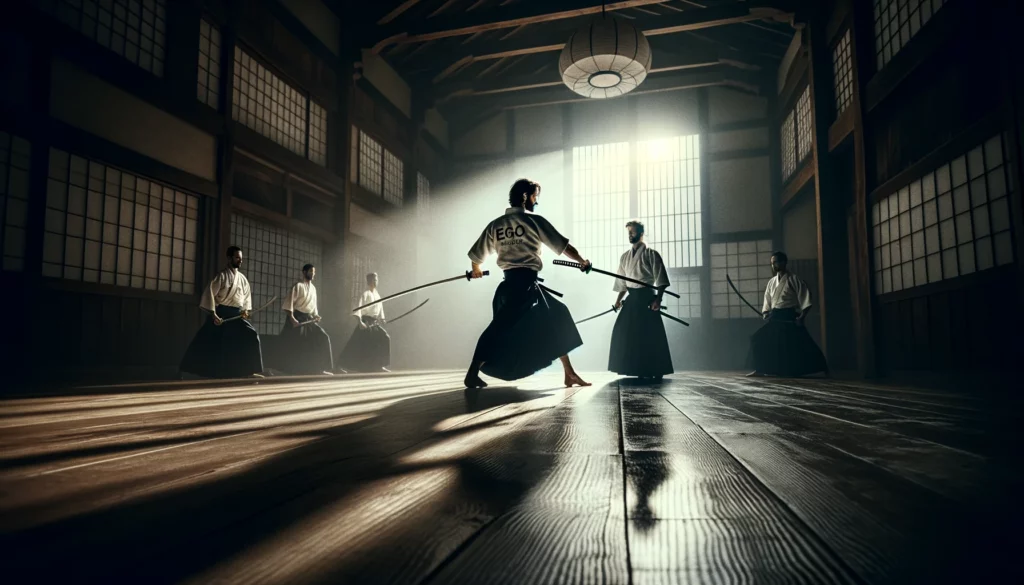

A Dance Between Light and Shadow
In a quiet dojo, where the air vibrates with concentration and the wooden floor echoes under the bare feet of practitioners, a silent and deadly dance unfolds. It’s not just a dance between swords, but also between souls, where the ego confronts and clashes with the discipline of iaido. In this martial art, so deeply rooted in Japanese culture and history, the ego is not just an adversary: it is an inseparable companion and the most difficult to defeat.
When we approach martial arts, it’s inevitable to bring with us the entirety of our being, including pride and preconceptions. The tatami thus becomes a mirror reflecting our deepest fears and insecurities. It’s common, especially among beginners but not exclusively, to interpret the practice as a challenge against the external, a confrontation with the other. However, the true essence of the martial study reveals itself the moment we understand that the only real adversary to overcome is within us.
Martial art, in its educational and philosophical journey, teaches us that overcoming the ego does not mean annihilating it, but recognizing it, accepting it, and transcending it. This process is not immediate, but requires dedication, patience, and, above all, humility. The true martial artist is the one who, through constant practice, learns to see the ego for what it is: a transient illusion, a mask that can be laid down.
Iaido, with its flow of silent and meditative kata, becomes a tool for deep introspection. Through the repetition and precision of movements, we learn to know our limits, our fears, and how these constitute our ego. The sword, more than cutting through the air, cuts away layers of arrogance and presumption, revealing our true nature and our need for the Absolute.
Therefore, at the beginning of the journey, the ego often stands as an obstacle. It can divert attention from true learning, focusing instead on comparing with others or on self-pity for the difficulties encountered. In this state, the sword becomes heavy, not just physically, but also spiritually. The mind, trapped in a labyrinth of egotistic thoughts, is not free to flow with the katana, and the practice becomes stiff, devoid of the grace and fluidity that are the essence of iaido.
However, over time and with constant practice, our ego begins to transform. It is not eliminated but educated, shaped by the discipline imposed by the Way of the Sword. Learning to recognize our arrogance, accept our fears, and overcome frustrations becomes an integral part of the journey. The sword, which once seemed heavy, finally transforms into an extension of the body and spirit, accompanied by an ego that has finally learned humility and patience.
The self-awareness that comes from having faced and changed our ego enriches every movement, every cut, and every return of the sword to the scabbard. The practice becomes an expression of inner balance, an act of pure presence that goes beyond mere technical execution. Every movement is meditation, every attack and defense a dance that arises from the depths. This state of flow, of absolute presence, allows us to overcome the duality of self-other, subject-object, and to access a space of pure awareness, where, in the end, the ego no longer has a reason to exist.
By engaging in the practice of iaido, we not only improve technically as martial artists but also grow as individuals. The lessons learned on the tatami transfer into everyday life, pushing us towards more conscious choices, more authentic relationships, and, ultimately, a more fulfilling and satisfying life.
